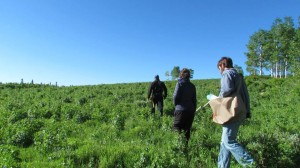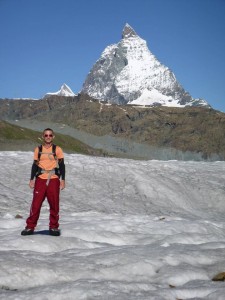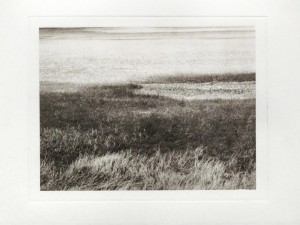The word “school” often conjures up images of classrooms, desks and lecture halls or long hours spent inside, sheltered from the sun or snow.
Some majors offered at BYU don’t include as much inside time but time spent in the outdoors with the Wasatch Mountains as the backdrop; studying these subjects can’t be fully understood in the traditional classroom.
Here are three majors that may intrigue or surprise students who are looking to spend time outdoors as an integral part of their education.
Adventurous major #1: Environmental science
BYU’s Plant and Wildlife Science department offers an environmental science degree designed to give students a scientific understanding of the earth and its resources.
Amy Clark, a student from Bountiful in the environmental science program, spends a lot of time outside as part of her studies.

“I have a lot of classes that take mini field trips during a lecture hour to look at things outside around campus,” Clark said. “There are a few classes that have three-hour labs where we are outside the entire time and travel to less-inhabited areas.”
Even with the field trips, Clark acknowledged that most class time during the semester is indoors. Students are outside the most for summer jobs and club activities within the major.
“There are a lot of opportunities to get on research projects, to join field crews for professors and grad students in the department or to work for a government or private agency, so I’d say the majority of students spend most of the summer outside,” Clark said. “Both majors also have academic clubs [where] we do things like hikes, cabin retreats, campouts, tagging, tracking and trapping animals, birding and plant identification.”
Loving all things outdoors isn’t a prerequisite for joining the major. For people who don’t like the idea of spending hours on end outside but are still intrigued by studying the environment, Clark says there are other options.
“Environmental science has different tracts or focuses, and some might not require quite as much time outside,” Clark said. “But a lot of job opportunities coming out of this major involve being outside for extended periods of time, so it attracts outdoorsy people in the first place.”
Adventurous major #2: Geology
Studying geology — the science behind the earth’s structure, its past and the processes that shape it— often requires leaving campus behind.

Eric Johnson, a geology graduate from Laguna Hills, California, recently completed a research trip studying glaciers in the Swiss Alps. In addition to this trip, Johnson has plans to go to Bhutan to begin work for his master’s thesis in fall 2014.
“[In the major] we do a lot of hiking to different outcrops of rocks and to various field sites. We create geologic maps of areas, which requires us to hike around the area we want to map, take measurements, and write down descriptions of the rocks we come across,” Johnson said. “Most geology classes have field trips throughout the semester so that we get to put what we’re learning in class in to practice.”
In order to graduate from BYU’s geology program, students must participate in a six-week field camp course where they hike, camp and collect samples throughout rural Utah.
“I don’t know how you could really understand geology well without a great deal of fieldwork,” Johnson said. “Pictures and class work are important, but it’s crucial that you get outside and observe the things you’re studying firsthand.”
Adventurous Major #3: Fine arts
It may come as a surprise, but some students in BYU’s Visual Arts department spend almost half of their class periods outside.
Michael Sharp, a graduate student from Brigham City working toward a master of fine arts degree, recently completed a course in landscape art.
“Most of my projects involved environments which let me spend a lot of time outdoors,” Sharp said. “We traveled every week and had a couple extended trips, including one down to

Escalante. I also had the opportunity to be part of an interdisciplinary exchange project where we took a group of art students from England up to Yellowstone and the Tetons for a week.”
For this major, the time students spend outdoors isn’t filled with strenuous activities. Instead, Sharp said the majority of the time he’s outside for class he’s observing nature so he can capture it just right.
Sharp’s wife received her bachelor’s degree in fine art and spent an entire summer exploring Europe as part of her studies.
“[In this major] a lot of material and inspiration is gathered outdoors, and then we often return to our studios to create the art,” Lili Sharp said.
In addition to the three majors listed above, other outdoor-focused majors include recreation management, plant and wildlife sciences and the archaeology emphasis in the anthropology program.




